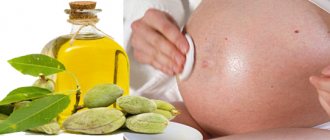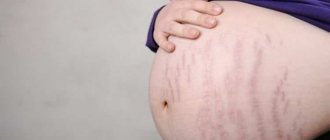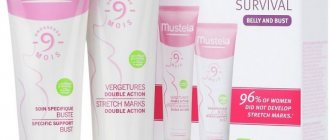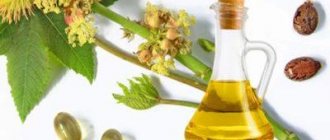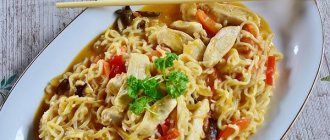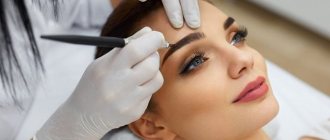Olive oil has been used by peoples of different countries for thousands of years. It is included in many dishes of Italian, Greek and Spanish cuisine and is distinguished by its dietary properties.
Olive oil is also recommended during pregnancy, as it is rich in various vitamins and microelements that the body needs.
- Benefits for pregnant women
- Recipes for the health and beauty of pregnant women To prevent and correct stretch marks
- To prevent and combat constipation
Composition of olive oil
Olive oil has a rejuvenating effect. It contains monounsaturated fats. Olive oil helps reduce cholesterol levels in the body and has a beneficial effect on the cardiovascular system. The product has pronounced antioxidant properties. Olive oil neutralizes the activity of free radicals and prevents premature aging.
Important! Olive oil has a positive effect on the functioning of the digestive system. It is recommended for use if a pregnant woman has liver and gall bladder diseases. Olive oil improves hair condition and helps keep skin young and beautiful.
How to cope with constipation without the risk of toning the uterus
By consuming the above amount of olive oil with food, it is quite possible to achieve good results in the fight and prevention of constipation. If the problem is serious, do not hesitate to consult a doctor: a specialist will select for you a safe and effective laxative that is allowed in your situation, for example, these could be:
- glycerin suppositories;
- Duphalac;
- Forlax;
- Prelax.
Forlax is a safe laxative that is often prescribed to pregnant women.
Expectant mothers should remember that a review of their eating and drinking regime will also help cope with constipation: food should be taken in fractional portions 5-6 times a day, while the amount of liquid drunk should be increased to 2 liters daily. And be sure to walk every day: physical activity is very important.
Consult your doctor about how to properly adjust your diet to include foods that have laxative properties. Suitable for these purposes:
- dried fruits (dried apricots, figs, prunes, dates);
- kefir;
- beet;
- dry fiber;
- baked apples;
- oatmeal;
- mineral water.
Eat with caution:
- rice;
- strong tea;
- chocolate;
- fatty broths;
- pears;
- cookie;
- ripe bananas;
- bread and baked goods made from premium flour;
- persimmon;
- eggplants.
They secure the chair.
Benefits of the product
Olive oil can be used not only during pregnancy, but also after the birth of the baby. The fatty acids contained in the product have a beneficial effect on the brain and nervous system. Linoleic acid present in olive oil improves breast milk production after childbirth.
Important! Regular consumption of olive oil reduces the likelihood of late toxicosis. The product has a beneficial effect on the cervix and helps increase the elasticity of its walls. Olive oil contains vitamin A, which prevents premature abortion.
Olive oil is also used in procedures such as perineal massage. The product helps increase the elasticity of the pelvic floor muscles. Perineal massage is indicated when there is a high risk of tissue rupture during childbirth (in the presence of scars). The procedure is performed under the supervision of a doctor. Perineal massage is contraindicated if there is a threat of premature birth or infectious diseases of the pelvic organs.
Drinking oil is not at all necessary: proper treatment and prevention of constipation
1-2 teaspoons of olive oil per day, added to meals, will help maintain normal bowel function. This method of prevention is even recommended in courses for expectant mothers held in antenatal clinics. The laxative effect of the oil is explained, among other things, by its effect on the functioning of the gallbladder. The role of bile for digestion is difficult to overestimate. It helps digest fats, improves food digestion, and participates in the formation of feces, so regular consumption of olive oil from the very beginning of pregnancy will prevent the problem of constipation.
However, olive oil should not be abused as a food product during pregnancy, and to solve serious problems with bowel movements, you should consult a doctor. He will select other products that are safe for pregnant women, for example, glycerin suppositories, Forlax or Duphalac.
Photo gallery: constipation medications allowed during pregnancy
Glycerin suppositories are effective within an hour after administration. Duphalac is a lactulose-based drug that has a number of more affordable analogues. Forlax contains macrogol.
You can prevent constipation by following a balanced diet, moving more, walking daily, drinking 1.5–2 liters of water a day and eating more plant fiber: vegetables and fruits, herbs, buckwheat, legumes, rye or bran bread.
Use of olive oil for culinary purposes
If you have constipation, olive oil can be taken orally. But this must be done with caution. When consuming olive oil in large quantities, side effects such as diarrhea and nausea may occur. In some cases, excessive indulgence in a healthy product can lead to an attack of renal colic.
During pregnancy, it is recommended to add a small amount of olive oil to your salad. It pairs perfectly with the following products:
- greens;
- broccoli;
- tomatoes;
- pumpkin;
- cucumbers
Important! Olive oil should not be used for frying. During heat treatment, carcinogens appear in the product, which provoke the occurrence of cancer.
Contraindications and possible side effects
Despite the fact that olive oil is a hypoallergenic product, completely healthy and safe, it should be consumed in limited quantities if you have the following diseases:
- cholecystitis (inflammation of the gallbladder);
- gallstones (oil can cause stones to move);
- intestinal infections;
- stomach upset (diarrhea).
Is it possible to drink oil on an empty stomach as a laxative?
Difficulties with regular bowel movements during pregnancy are a consequence of natural processes in the body: the influence of the hormone progesterone in the early stages, the pressure of the growing uterus on the intestines in the later stages. Since many medications for constipation are not recommended for expectant mothers to take, women sometimes turn to folk remedies. Taking a few teaspoons of vegetable oil on an empty stomach is considered one of the most effective and safest, but doctors warn against its use during pregnancy. There are several reasons for this.
In its pure form, to normalize stool, olive oil is taken one tablespoon daily on an empty stomach, washed down with water or juice. This method of combating constipation has recently acquired a large number of opponents, whose position is justified by the increased load on the liver, which is provoked by the fatty substance. During pregnancy, it is extremely undesirable and dangerous.
Vegetable oil on an empty stomach, especially if washed down with liquid, has a strong laxative effect due to the fact that it causes increased intestinal motility. Increased contractile activity of the intestines often causes tone and contractions of the uterus, which threatens miscarriage in early pregnancy and premature birth in late pregnancy.
Laxatives, the action of which is based on enhancing muscle contractions of the gastrointestinal tract, are contraindicated for expectant mothers.
In addition, taking the oil on an empty stomach can cause nausea, vomiting and diarrhea. These conditions are dangerous during pregnancy, as they threaten the development of dehydration of the woman and fetus.
There are widespread tips online to massage the perineum with olive oil to prepare for childbirth. You should know that only a doctor can prescribe this procedure after assessing its feasibility, and such a massage must be entrusted to a qualified specialist. In addition, the inclusion of olive oil in the diet itself helps prepare the muscles for childbirth.
Olive oil for stretch marks during pregnancy
A product made from olive oil and almond oil is effective.
Nourishing oil is made from almond seeds. The product contains a large amount of oleic, linoleic acids, and bioflavonoids. Almond oil helps not only with stretch marks, but also with sunburn. It has an antibacterial, soothing and analgesic effect.
Almond oil is rich in beneficial substances such as proteins, amino acids, dietary fiber, B vitamins, minerals, and beta-carotene. The product activates the skin regeneration process. Almond oil helps eliminate stretch marks during pregnancy. It has a pronounced rejuvenating and wound-healing effect. Almond oil penetrates into the deep layers of the skin and helps restore the water-fat balance in the body. Almond oil activates the process of hyaluronic acid synthesis.
The oil made from almonds has a fairly light texture. It is perfectly absorbed and has a pleasant aroma. Almond oil helps increase the strength of cell membranes, nourishes and moisturizes the skin.
To prepare an effective remedy for stretch marks, take one tablespoon each of almond and wheat germ oils. Aroma oils are combined with 1 tsp. silicone and 10 ml olive oil. Beat the resulting mixture thoroughly with a blender and place in a cool place for three minutes. After the specified time, 15 drops of vitamin E are added to the balm. It is recommended to store the resulting product in the refrigerator.
To prevent the occurrence of stretch marks, you need to apply olive oil to the skin starting from the 20th week of pregnancy. Particular attention should be paid to such areas of the body as the abdomen, hips, and chest. It is in these problem areas that stretch marks most often appear.
Olive oil is recommended to be applied to the body after a shower. Remains of the product can be removed with an ordinary paper towel.
Olive oil has nourishing and moisturizing properties. The product activates the process of collagen production and activates the process of cell renewal. Olive oil helps fight skin itching, eliminates flaking and excessive dryness.
There are also certain recommendations to reduce the risk of stretch marks on the skin:
- a pregnant woman should eat right and monitor her weight;
- the expectant mother is advised to wear special bandages that reduce the likelihood of stretch marks;
- A contrast shower, which increases skin tone, is also useful as a preventive measure;
- a pregnant woman can have a massage that activates blood circulation in the body;
- in the absence of contraindications, baths with aromatic oil extracts and solutions prepared based on pomegranate fruits will help keep the skin firm and elastic.
Choosing quality
To get the maximum benefit from the inclusion of olive oil in your diet and cosmetic use, it is important to choose this product correctly. Here are the basic rules:
- Olive oil can be refined or unrefined. Unrefined oil is not subjected to heat treatment during the production process, which allows it to preserve almost all the beneficial qualities of the product. It does not contain chemicals, so it is better to purchase it for both food and cosmetic purposes.
- The highest quality and healthiest product is extra virgin - cold-pressed oil.
- If the oil's characteristics contain the word mix, this means that the product is obtained by mixing several types of oil. It is better not to purchase such olive oil.
- The acidity level of an oil indicates its taste: the product that has less acidity has a milder taste. The best acidity indicator is 0.8%.
- Choose a product marked DOP (sometimes IGP): this designation is assigned to oil produced and packaged within the same state.
- When choosing oil, you should pay attention to the date of manufacture of the product - most of the beneficial substances are retained in it for five months.
- Dark glass containers best preserve the beneficial properties of the product.
Preparing nourishing hair masks
In order to prevent hair loss during pregnancy, you can make masks based on olive oil. The cosmetic mixture contains the following components:
- 1 yolk;
- 30 ml olive oil;
- honey (in the amount of 1 tsp).
All the above ingredients are thoroughly mixed. A nourishing mask is applied to the hair roots. It is recommended to wear a shower cap on top. The head should be wrapped in a towel. It is recommended to keep the cosmetic mask on for 30 minutes. After this time, it is washed off with warm water. The frequency of use of the product is twice a week.
During pregnancy, a problem such as split ends of hair often arises. The expectant mother can prepare the product according to the recipe below:
- You need to take one yolk.
- You need to add 10 ml of apple cider vinegar, 30 ml of olive oil.
The resulting mass is thoroughly mixed and heated in a water bath. The mask should be applied to the ends of the hair in an even layer. The head is wrapped in cling film and covered with a warm towel. After 30 minutes, wash off the mask with water. The procedure is performed twice a day.
Recipes for using olive oil for the beauty and health of a pregnant woman
It is much easier to prevent stretch marks than to get rid of them after childbirth. Heredity plays a large role in their occurrence. But still, any woman can minimize the risk of this unpleasant problem. Natural olive oil helps a lot.
When applied to the skin, olive oil locally increases blood circulation and activates skin repair processes.
To prevent stretch marks, apply oil to the skin twice a day after showering. There is no need to get dressed right away. You need to allow the beneficial substances to be completely absorbed into the skin. Remaining oil can be removed with a paper napkin. This procedure will have an even greater effect if carried out after a light peeling.
You can start using olive oil to prevent stretch marks from the first trimester of pregnancy.
Traditional recipes for stretch marks
- Take half a glass of olive oil and aloe juice, add 5-7 drops of vitamin E. Mix the ingredients and apply to problem skin for 20 minutes, then rinse or wipe the skin with a napkin.
- Mix finely chopped grapefruit zest with 2 tbsp. spoons of butter and add 150 grams of low-fat sour cream. Stirring until smooth, apply to stretch marks for 15 minutes. After the time has passed, wash off the mask with water.
Video: Olive oil for stretch marks is the best remedy
How to drink for constipation
Since olive oil does not cause any side effects, it can be used as a laxative during pregnancy. In this case, it is very important to follow the prescribed dosage.
Pregnant women should drink the oil in the morning and evening on an empty stomach, and wash it down with warm water. You need to drink a tablespoon of the product at a time. A stable effect will be achieved after a week of regular use.
Important! A pregnant woman should take olive oil under the supervision of a doctor if she is constipated.
Massage with olive oil for tears after childbirth
Thanks to perineal massage, for which olive oil is used, you can avoid cuts and tears during childbirth and make the skin more elastic. Doctors recommend this procedure:
- primiparous women;
- giving birth naturally after cesarean section;
- multiparous, if the first time there were ruptures and incisions, as well as postmaturity.
Only a specialist should conduct sessions, since incorrect massage technique can lead to premature birth.
There are several rules that must be followed during massage:
Recent Entries
Is it possible to give a mirror: how to protect yourself from bad omens It became known about the influence of cell phone towers on human health Is it possible to eat bananas bought in Russia?
- Massage must be performed regularly.
- Before the session, you should take a warm bath or shower, which will help relax your muscles.
- Before the procedure, the intestines and bladder must be emptied.
- The oil used must be sterile or well heated over a fire.
- The person performing the massage should have their hands thoroughly washed and their nails trimmed.
Perineal massage is prohibited for various diseases, such as herpes and vaginitis, the threat of miscarriage and the risk of premature birth, allergic rashes and elevated body temperature.
Perineal massage technique
The best position during a massage: lying on your back. You need to place a small bolster or pillow under your lower back.
- The specialist generously pours oil on his fingers and lubricates the skin of the perineum and the third of the vagina closest to the entrance.
- After this, he inserts one finger into the vagina at a distance of 3-4 cm and begins to gently press on the back wall of the vagina and on the sides, as if stretching it. Such manipulations continue for 5–7 minutes until a feeling of slight tingling and tension arises.
- After this, the specialist begins rhythmic movements, moving to the perineum in the direction of the anus. This stage lasts about 3 minutes. All movements should be gentle, but at the same time a little pressing.
- At the end of the massage, you can apply a warm heating pad to the perineum for half an hour to an hour. This will help soften the tissues and enhance the massage effect.
The number of sessions of this procedure depends on the stage of pregnancy:
- up to 28 weeks - one procedure every 7–10 days;
- 28–32 weeks, one procedure per week;
- 32–36 weeks once every 3–5 days;
- 36–38 weeks every other day;
- in later stages (from 38 weeks) daily procedures.
For hair
Many pregnant women complain of hair loss. Olive oil helps to cope with this problem. The hair mask recipe is simple.
- Mix 3 tbsp. spoons of butter, 1 teaspoon of honey and egg yolk.
- Rub the resulting mixture into the roots of your hair, put on a cellophane cap, and wrap it with a towel on top.
- After 40–60 minutes, rinse the mask with warm water.
You can do this procedure 1-2 times a week.
Photo gallery: ingredients for a mask against hair loss
Olive oil is a healing agent that treats hair and scalp
It is best to use homemade eggs
Ideally, honey will be purchased directly from beekeepers
You can also rub slightly heated oil into the roots of your hair for 10–15 minutes before each wash. This will moisturize your scalp and get rid of dandruff.
For skin
For dry skin, a mask based on olive oil will help greatly.
- To prepare it, you need to mix 1 tbsp until smooth. a spoonful of oil and 1 tbsp. spoon of cottage cheese.
- Apply to facial skin, and after 15–20 minutes rinse with warm water.
- If the skin is problematic and prone to rashes, then cottage cheese should be replaced with green or white clay.
You can repeat this mask no more than 2 times a week.
Photo gallery: ingredients for a mask for dry skin based on olive oil
Vitamins A and D contained in the oil are involved in the renewal of the epidermis
For dry skin, it is recommended to use richer cottage cheese
Clay in its pure form is not used for dry skin.
Olive oil body wraps
- Dilute blue clay purchased at a pharmacy with still warm mineral water. Apply the resulting mixture to problem areas of the skin and wrap with cling film. After an hour, rinse and lubricate the skin with a thin layer of olive oil. You can do a similar procedure twice a week for a week.
- Mix olive and lavender oil in equal parts. Add chamomile infusion. To prepare the infusion you need to pour 4 tbsp. spoons of dried flowers with two glasses of boiling water, leave for half an hour. The resulting mixture should be applied to problem areas of the skin with gentle rubbing movements. Then wrap in cling film and a sheet. After an hour, rinse with warm water. Such wraps can be done daily for two months.
- Mix equal parts onion extract and olive oil. Rub the mixture into problem areas, wrap in cling film and a sheet. Rinse off after 40–60 minutes in the shower using a mild body gel. The procedure is carried out twice a week for three months.
Such wraps will help not only get rid of stretch marks after childbirth, but also maintain your figure and remove extra pounds.
Olive oil wraps will help maintain your figure after childbirth
To preserve female beauty
Olive oil is actively used to care for the skin of the face and body, hair and nails. It is well absorbed, usually does not cause allergic reactions and does not clog pores. The oil has a noticeable effect on dry skin, adds shine to hair, prevents hair loss and dandruff, and improves the condition of brittle and thin nails.
Olive oil can also help relieve itching of dry, inflamed skin.
Preventing the appearance of stretch marks on the body
Stretch marks are the No. 2 problem for women after cellulite. Olive oil is the best remedy for stretch marks and the accompanying itching. It supplies the cells with organic acids, vitamins and minerals necessary to maintain elasticity and a normal level of moisture, and stimulates the production of collagen, which is responsible for the smoothness and elasticity of the skin.
Vitamin E contained in olive oil has a powerful antioxidant and regenerating effect.
Olive oil can be used as a cream or lotion. The best effect will be obtained from an unrefined, first cold-pressed product.
How to use
Before using olive oil for stretch marks during pregnancy, you need to prepare “problem” areas on the skin. Preparation involves peeling off dead epidermal cells using a natural scrub, which can easily be done at home. To do this you need: mix 1 tbsp. l. honey, 2 tbsp. l. ground coffee or coffee grounds and add 1 tablespoon of olive oil. In addition, use a salt scrub. Mixture recipe: sea salt and olive oil are mixed in equal proportions. For breast peeling, a soft scrub made from 2 parts semolina and 3 parts liquid soap is suitable. You should not buy a scrub because it contains harmful preservatives and additives.
The scrub is applied to clean skin, so you must take a shower before the procedure. The prepared peeling mixture is rubbed into the skin with smooth massaging movements until the stretch marks turn slightly red. The scrub can be rubbed in with a hard sponge. During the procedure, the skin is cleansed of dead cells and saturated with beneficial oil substances. Peeling time is 5-7 minutes once a day. After the stretch marks become red, the scrub mixture should be washed off with cool water and the skin should be wiped with a soft towel.
***
In the next step, you can apply olive oil. It is also rubbed with light massaging movements onto problem areas for 15 minutes until it is absorbed. Excess oil can be blotted with a napkin. For prevention, the product is rubbed into the skin, both on the tummy and on the hips, chest, and buttocks. You can shower after the procedure 2-3 hours later; you cannot put on clothes before that.
It is enough to do peeling once a day, and you need to apply olive oil 2 times a day to make the skin firm and elastic. To increase the effectiveness of the procedure, experts recommend adding additional components to olive oil, for example, 10 drops of orange or lavender essential oil per 20 grams of the key product. Also, for greater effect, use lemon by mixing 2 tablespoons of olive oil and the juice of half a citrus.
Mechanism of action
During pregnancy, the mother's skin stretches significantly as the fetus grows. The process is quite fast, during which the woman’s body does not have time to produce enough collagen, which ensures the elasticity and correct structure of the skin.
As a result, there is a rupture of the deep fibers of the epidermis, more pronounced in problem areas, such as the surface of the abdomen, chest, thighs and buttocks. Long, unsightly stripes that are a different color from the surrounding fabric. The skin underneath, lacking sufficient blood supply and, accordingly, nutrients, ages faster, aggravating the problem with an even flabby and sagging appearance.
Tanning will not help here; it only more clearly marks the boundaries of problem areas, creating a contrast in color due to pigmentation.
Important factors of heredity and hormonal changes contribute to the development of the problem.
The following will help prevent sprains:
- competent selection of lingerie items specially designed for pregnant women;
- a thoughtful daily routine, with a balanced diet, optimal physical activity and proper rest;
- use of appropriate modern cosmetology products.
Of the numerous external care products intended for pregnant women, the advantage of natural, natural compositions is undeniable.
For example, vegetable oils, among which olive oil occupies a leading position. It has unique properties to moisturize the skin and promote collagen production. Stretch marks violate the integrity of the skin structures, and the properties of the oil help restore its structure.
Other oils can bring no less benefit to the expectant mother. For example, almond oil is effective in the fight and prevention of stretch marks, castor oil will help to begin labor if it does not occur, tea tree esters can be used for various unpleasant conditions that accompany pregnancy (toxicosis, candidiasis, hemorrhoids, varicose veins and others)
The mechanism of action of olive oil is due to the presence of the following components:
- Vitamin E accelerates skin restoration at the cellular level and is included in all known remedies for stretch marks and stretch marks.
- Vitamin A increases skin elasticity and stimulates collagen production.
- Vitamins K and D improve not only the structure of the skin of mother and child, but also strengthen their skeletal system.
- Omega-3 polyunsaturated fatty acids, high-density lipoproteins, and other numerous beneficial elements with antioxidant effects improve the overall health of a woman and her unborn child, nourish and regenerate the skin, enhancing its protective functions.


